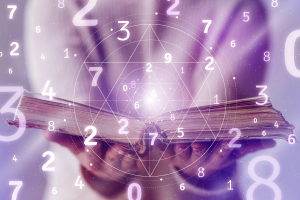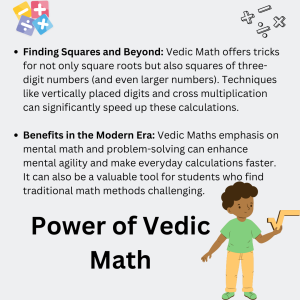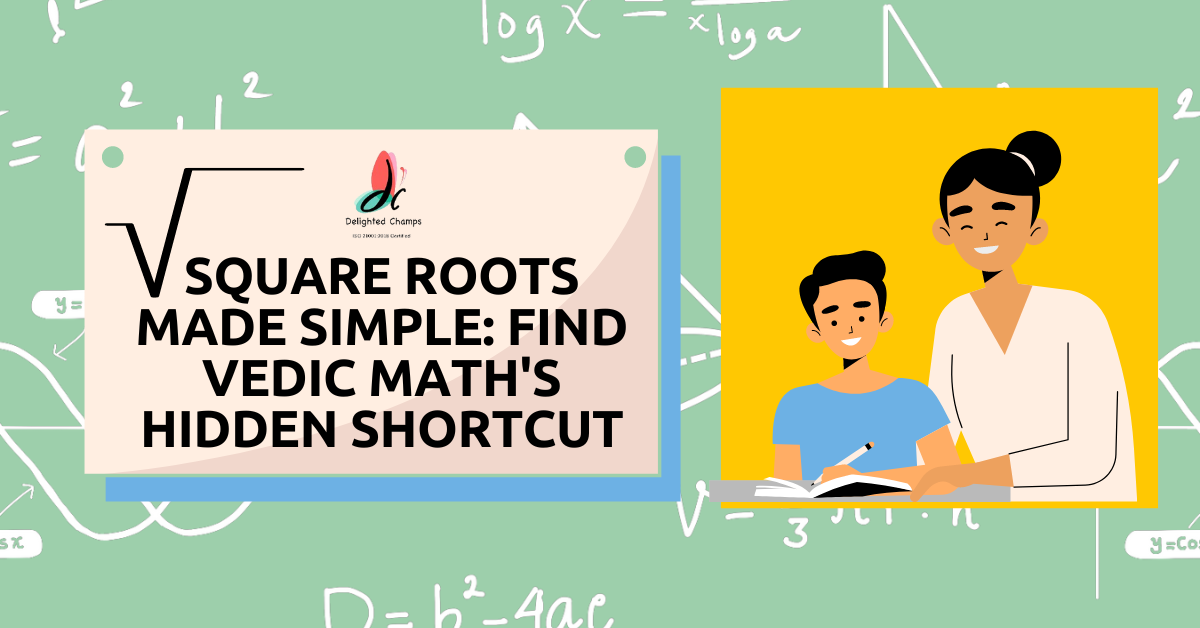Have you ever struggled with finding square roots? Fear not, Vedic Mathematics has calculation techniques that can simplify this seemingly complex task.
Unlike the traditional method, Vedic Math offers mental math techniques to easily and efficiently find square roots.
This blog explores this core and fundamental function of Vedic Math to find out the roots, enabling you to solve problems with confidence.
We’ll focus on a specific method – that is perfect for beginners – that allows you to solve the roots of perfect squares. This method is particularly helpful for identifying square roots quickly and accurately.

But let us start with answering some intriguing questions you might have:
- How can I become Vedic Math proficient? We will discuss resources like the renowned Bharati Thirthaji book and explore tips for excelling at these techniques.
- Is Vedic Math faster than traditional methods? We’ll delve into the efficiency of Vedic Math and its potential benefits in a fast-paced world.
Vedic Math for perfect squares:
- Grouping Digits: Break down the number into groups of two digits, starting from the rightmost side. For example, consider the number 169. We would group it as 1 | 69.
- Identifying the Perfect Square: Find the closest perfect square to the leftmost group (1 in this case). The closest perfect square here is 1 (1 x 1).
- Estimating the Root: The first digit of your square root will be the unit digit of the perfect square identified in step 2 (1 in this case). So, based on this method, the first digit of the square root of 169 is 1.
- Unit Digit Check and Trial Number (1x): Since 169 ends in 9 (odd digit), the square root’s last digit must also be odd. We create a trial number by combining the estimated first digit (1) with a tentative second digit (x). So, our trial number is 1x.
- Refine the Trial Number (Iteration): We mentally multiply 1 by 1x (1 multiplied by itself and then by x). If 1 x 1x is greater than 1 (the leftmost group), we decrease the tentative second digit (x) in our trial number (1x). In this case, 1 x 11 = 11, which is greater than 1. So, we decrease x to a smaller odd number (like 3). Our new trial number becomes 13.
- Find the Final Answer (13): We multiply 1 by the refined trial number (13): 1 x 13 = 13. Since 13 is very close to the leftmost group (1), and 13 x 3 (39) matches the rightmost group (69), our final answer is 13. Therefore, the square root of 169 using Vedic Math is 13.
Beyond Perfect Squares:
While the method discussed provides a solution for perfect square roots, Vedic Mathematics has shortcuts for non-perfect square roots as well.These techniques involve slightly more advanced steps, but they remain significantly faster than traditional methods.
Further Exploration:

- The Valuable Book: Mastering the Bharati Tirtha Ji book, a cornerstone of Vedic Math, requires dedication. Focus on understanding the core sutras and practicing them regularly. The book provides a comprehensive explanation of various Vedic Math techniques, including those for square roots.
- The Origins of Vedic Math: While the exact origin remains debatable, Vedic Math principles are believed to have roots in the ancient Vedic period of India. Some scholars believe these techniques were passed down through oral traditions for centuries before being compiled into texts.
- Shortcuts and Simplicity: Vedic Math has numerous short tricks helpful for quick calculations, many of which are designed for easy memorization. This makes Vedic Math particularly appealing for those who want to develop mental math proficiency.
The Power of Vedic Math

- Finding Squares and Beyond: Vedic Math offers tricks for not only square roots but also squares of three-digit numbers (and even larger numbers). Techniques like vertically placed digits and cross multiplication can significantly speed up these calculations.
- Benefits in the Modern Era: Vedic Maths emphasis on mental math and problem-solving can enhance mental agility and make everyday calculations faster. It can also be a valuable tool for students who find traditional math methods challenging.
Learning Resources
Numerous online resources and courses can guide you on your Vedic Math journey. The Bharati Thirthaji book remains a key resource, but there are also websites, apps, and even YouTube tutorials dedicated to explaining Vedic Math concepts in a clear and engaging way.
The Takeaway:
Vedic Math offers a unique and empowering approach to mathematics. With practice, you can apply these techniques to solve not just perfect squares but also more complex problems.
There’s a whole world of fascinating techniques waiting to be discovered. Stay tuned for further articles as we delve deeper into this enriching system.




